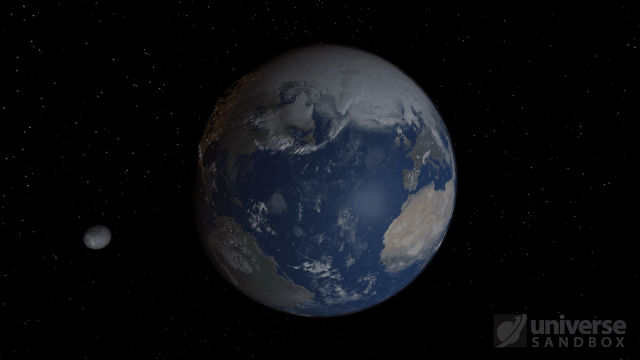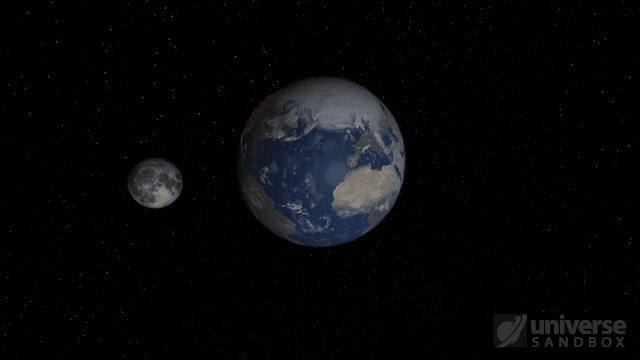Skies of Blue, Red Collisions Too | Update 32.1


If Update 32.1 does not download automatically, follow these update instructions. If you don’t own Universe Sandbox, you can buy it via our website.
Collision shockwaves and atmosphere colors are more realistic, camera motion is smoother, and you can try the new Automatic Simulation Speed, which adjusts the simulation speed based on what’s happening in the simulation. Never miss a collision again!

Improved Shockwaves
Energy from collisions spreads more realistically over the surface of an object, resulting in larger shockwaves. Heating from collisions is also less concentrated and spreads over a larger area. Previously, shockwave expansion ended abruptly in a smaller area, often resulting in blue-hot impact sites.
The dwarf planet Ceres colliding with Earth


The Moon colliding with the Earth


Automatic Simulation Speed
Allow the simulation speed to adjust itself automatically based on various conditions, like nearby objects and collisions, by turning on the new Automatic Simulation Speed feature. Automatically speeding up and slowing down the simulation speed provides an improved viewing experience for collisions, orbits, explosions, and more.
This feature is still in active development and is currently off by default. Turn it on under
Settings > General > Experience > Auto Simulation Speed

The simulation speed will slow down to show collisions that you might otherwise miss


Create a more cinematic experience while watching simulations like Earth & 100 colliding moons


Rayleigh Scattering
Object atmospheres now visually simulate Rayleigh scattering, which describes how light scatters in the atmosphere. Rayleigh scattering is what makes Earth’s daytime sky appear blue and the setting Sun appear red. Adjust the strength of the scattering under
Visuals > Atmosphere > Rayleigh Scattering Strength
Earth with realistic Rayleigh scattering


Custom object with Rayleigh scattering at 85% strength


More Highlights
Your view now smoothly rotates, or pans, to focus on an object instead of sliding the view left or right, like a camera on rails


Atmospheres are now visible from the surface of planets. Land on a planet by pressing “c” on your keyboard to check it out.


Check out the full list of What’s New in Update 32.1
Please report any issues on our Steam forum, on Discord, or in-game via Home > Send Feedback.

about 2 years ago
Please may we have collisions in any custom color?
about 1 years ago
will we ever see collisions that have the potential to create very large divots? Craters and collisions in the game now seem to leave behind burn marks and spots on a planets surface. And they have came along way since the start of game. But I see that these craters don’t typically create deep dents in the planet. will we ever see craters that do this? Divots that dig deeper below the surface?
about 1 years ago
ah yes air
about 1 years ago
Cool